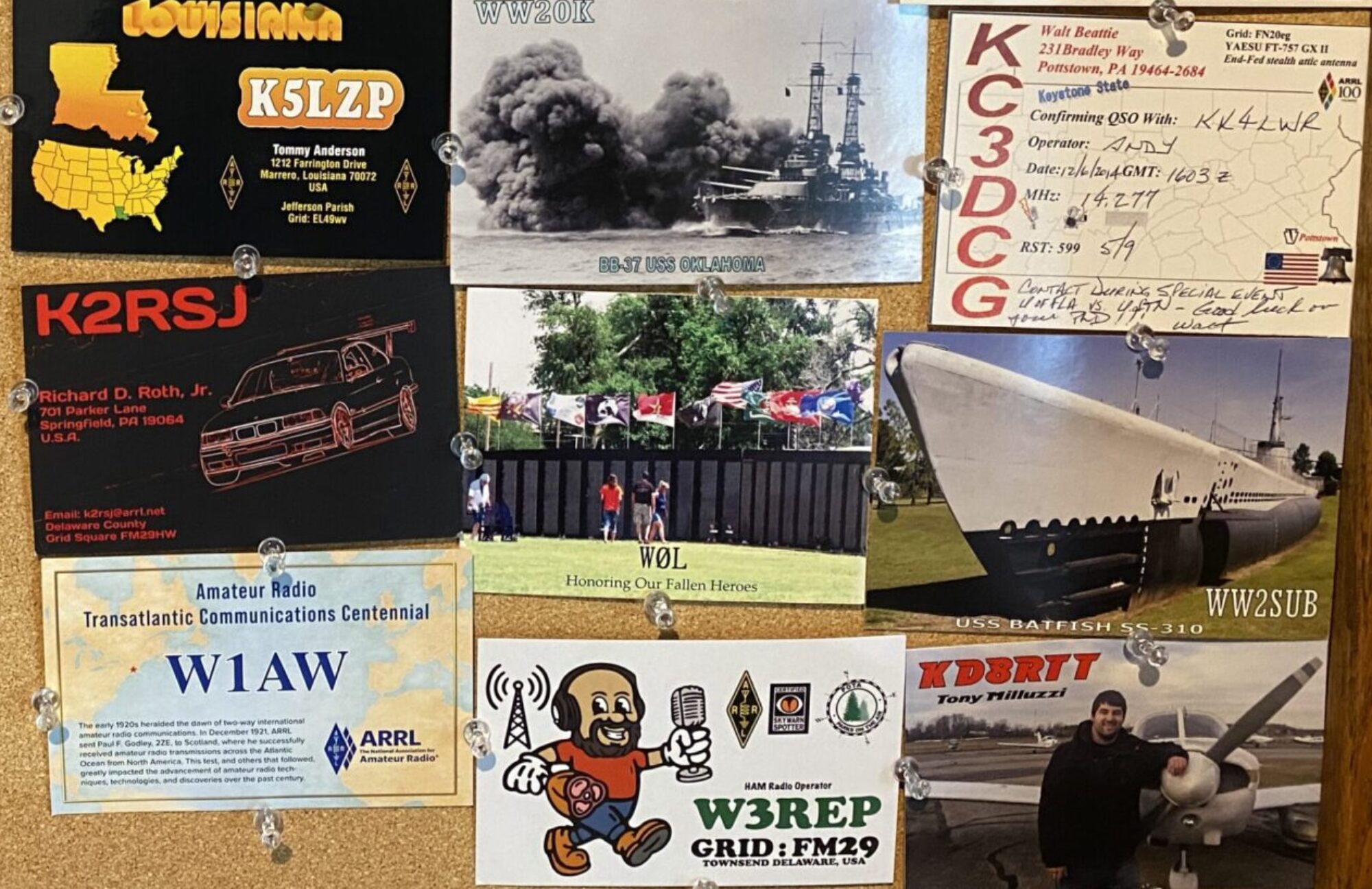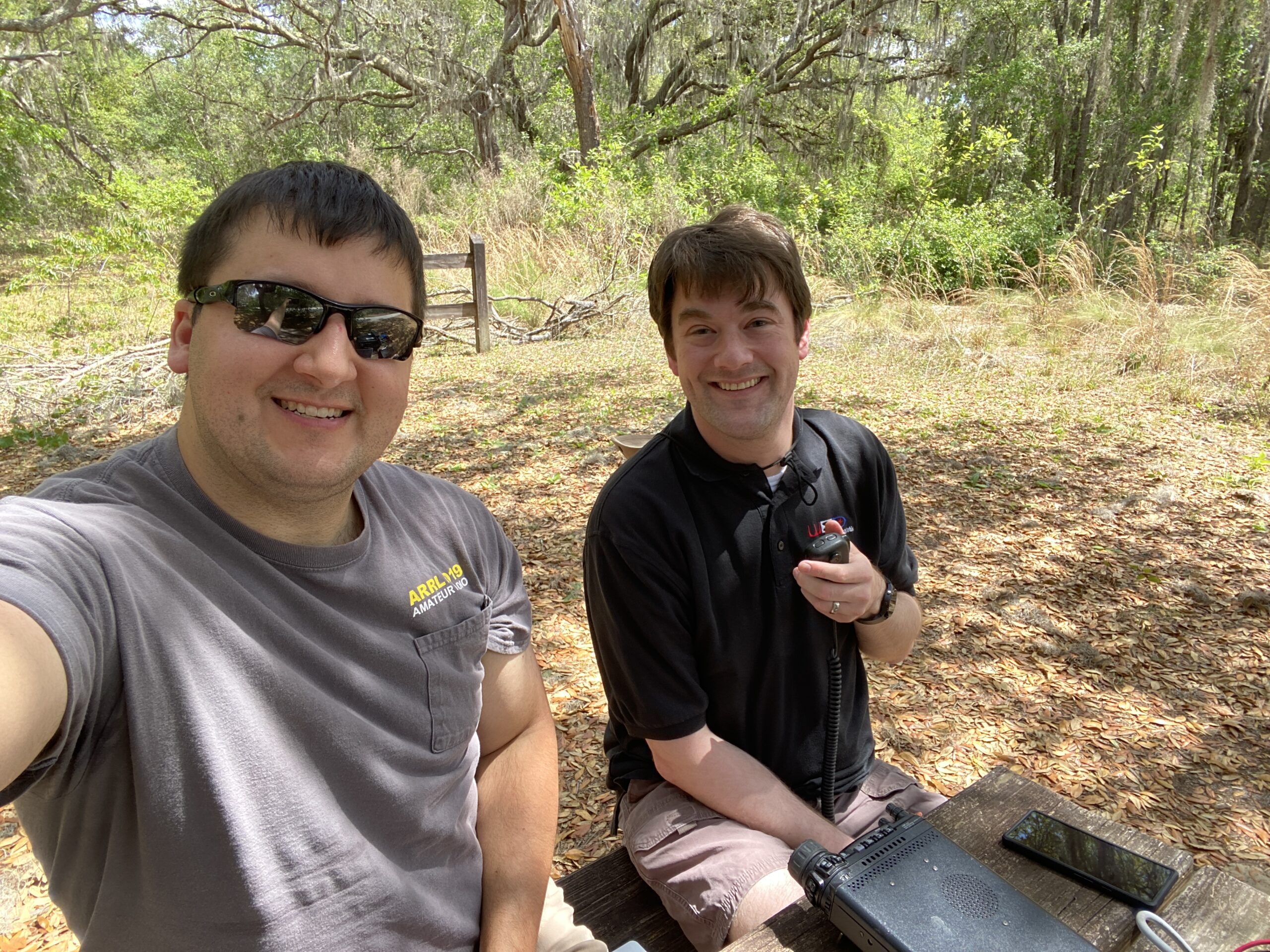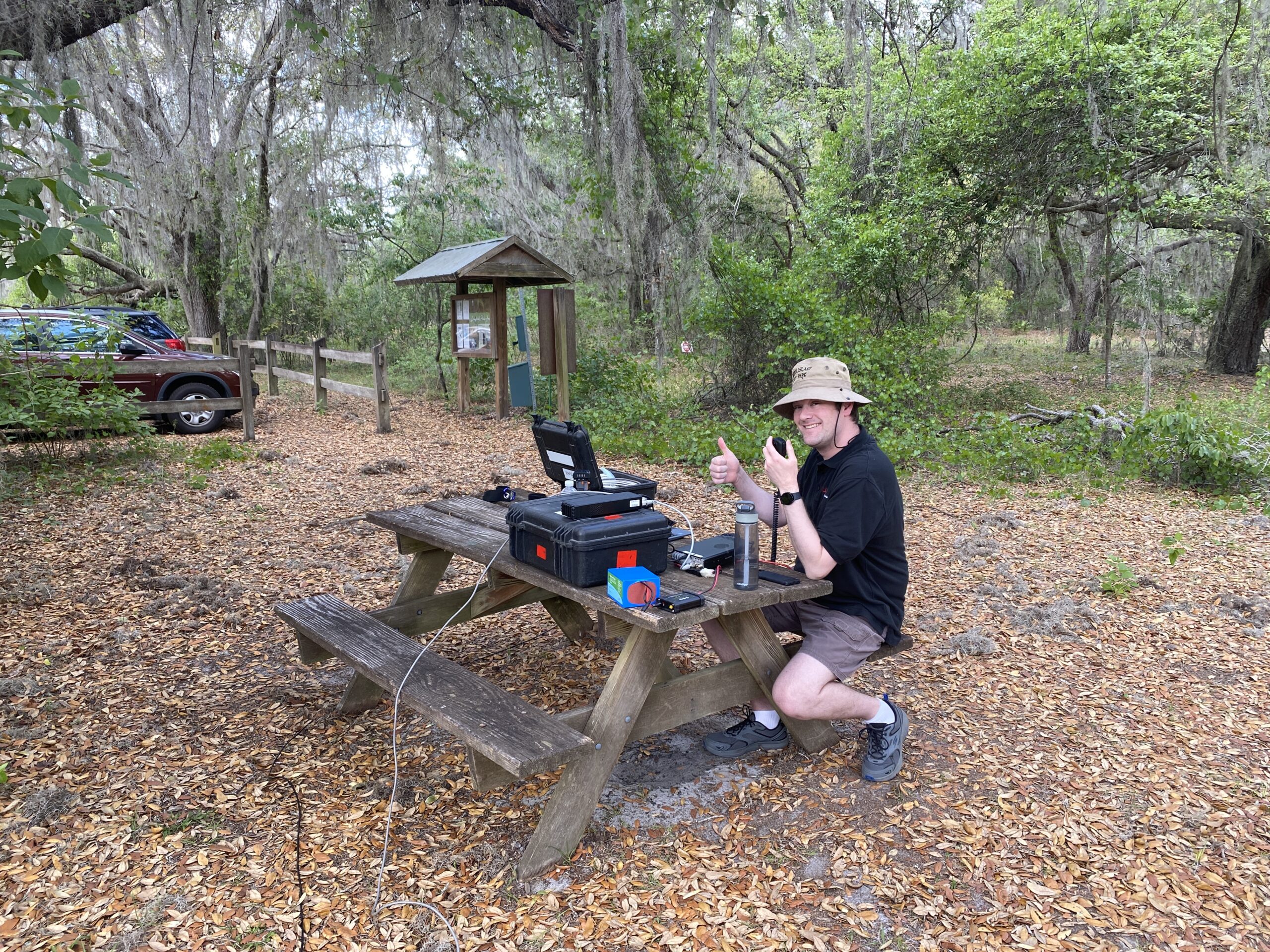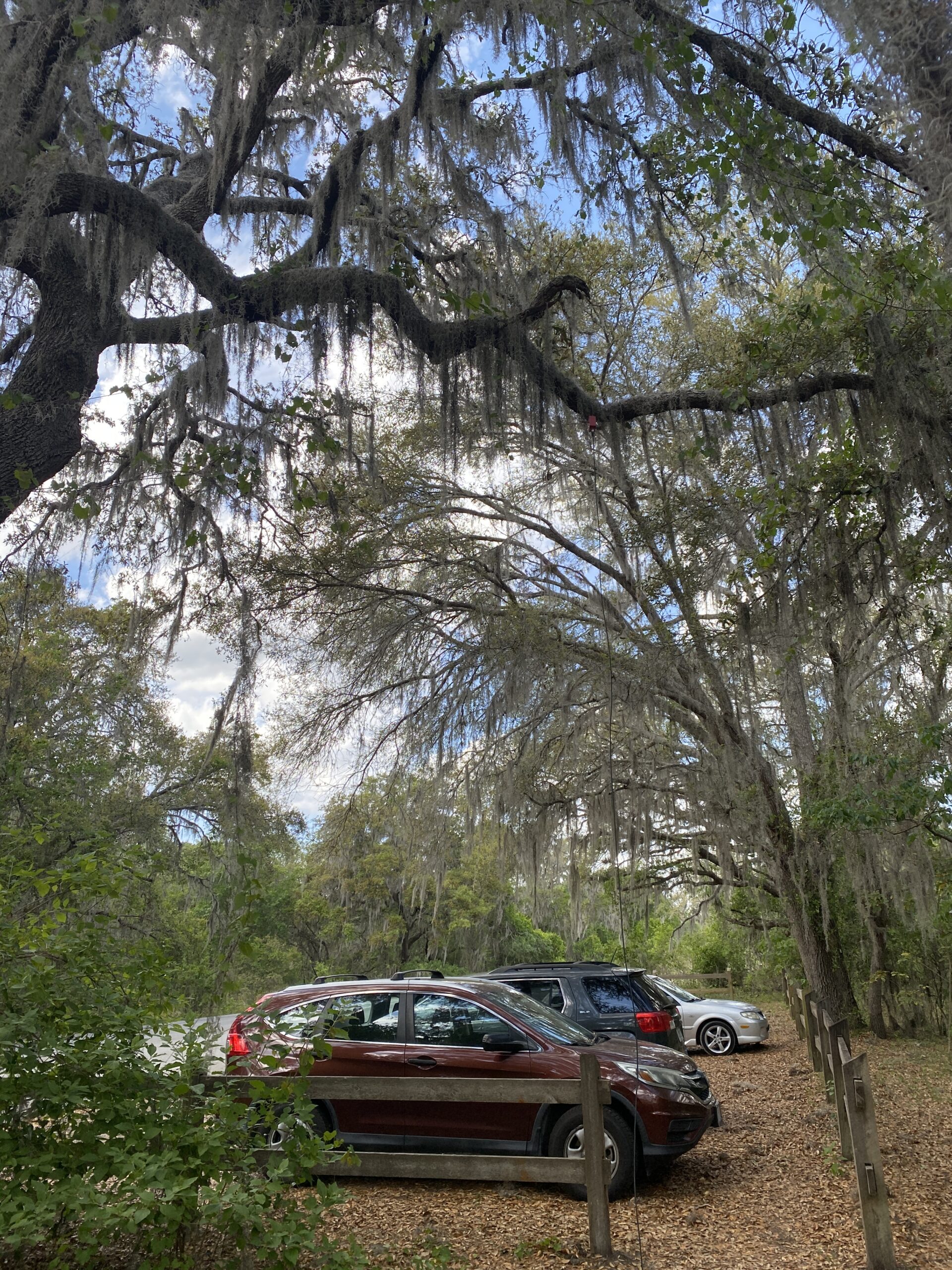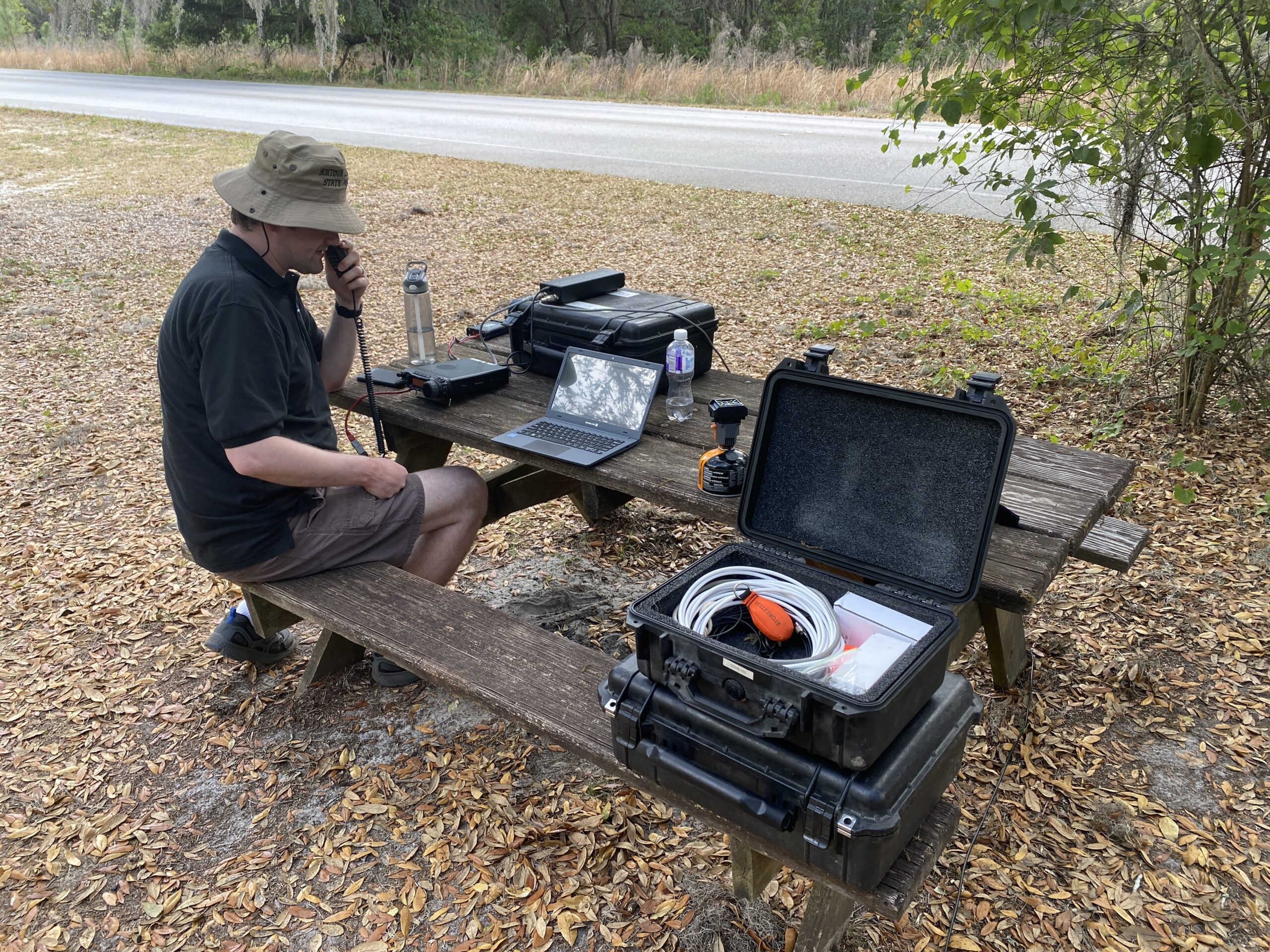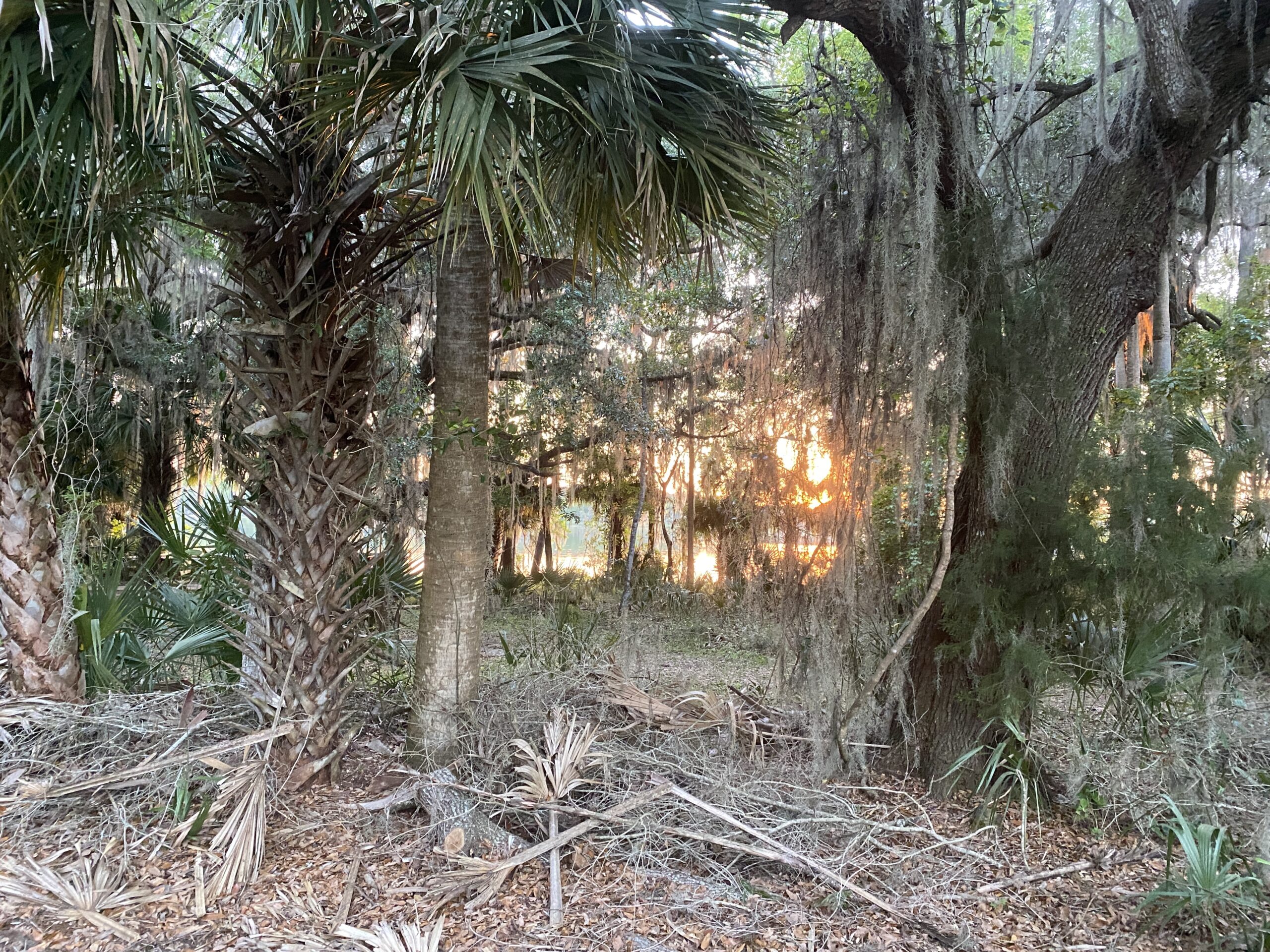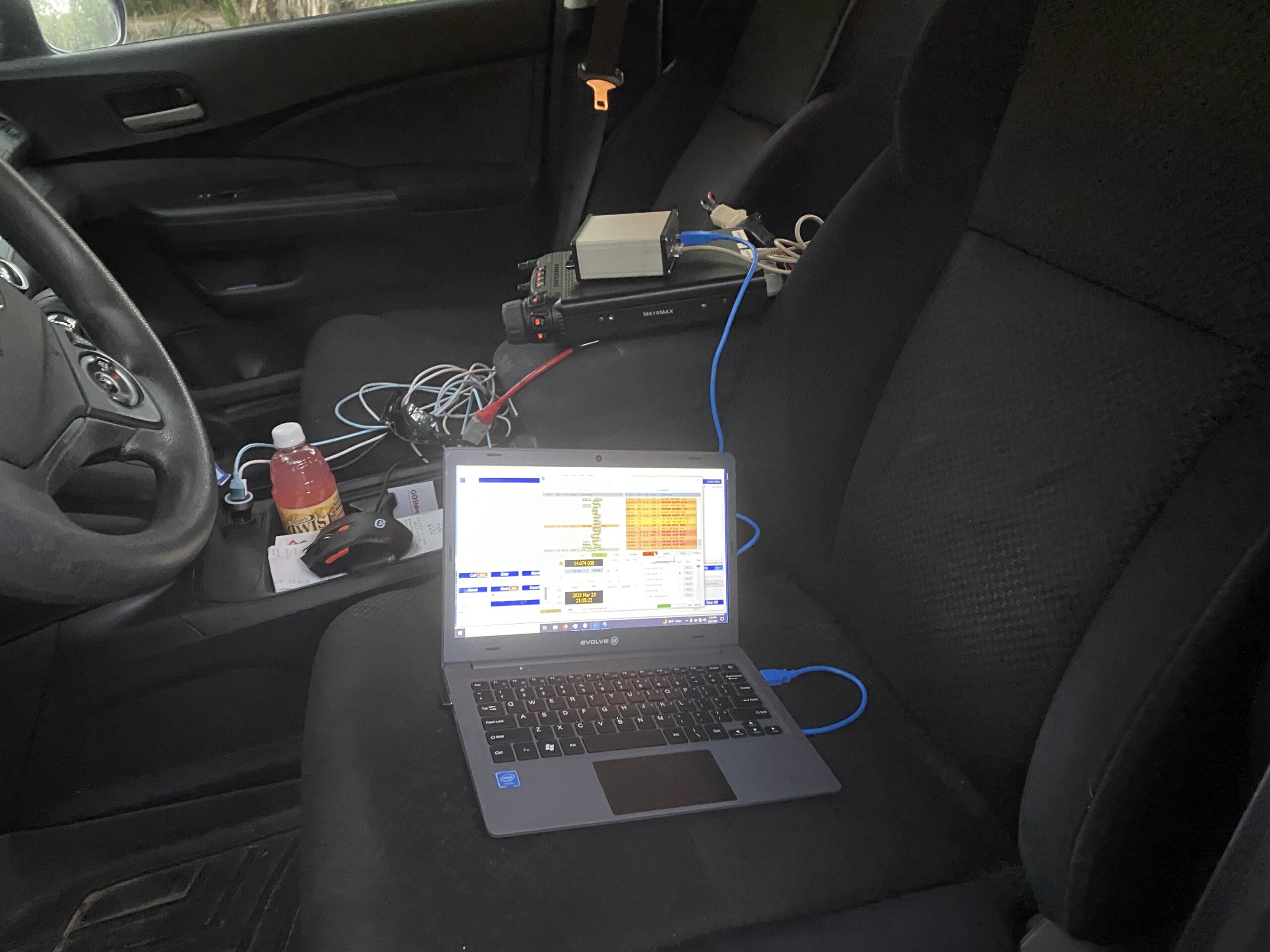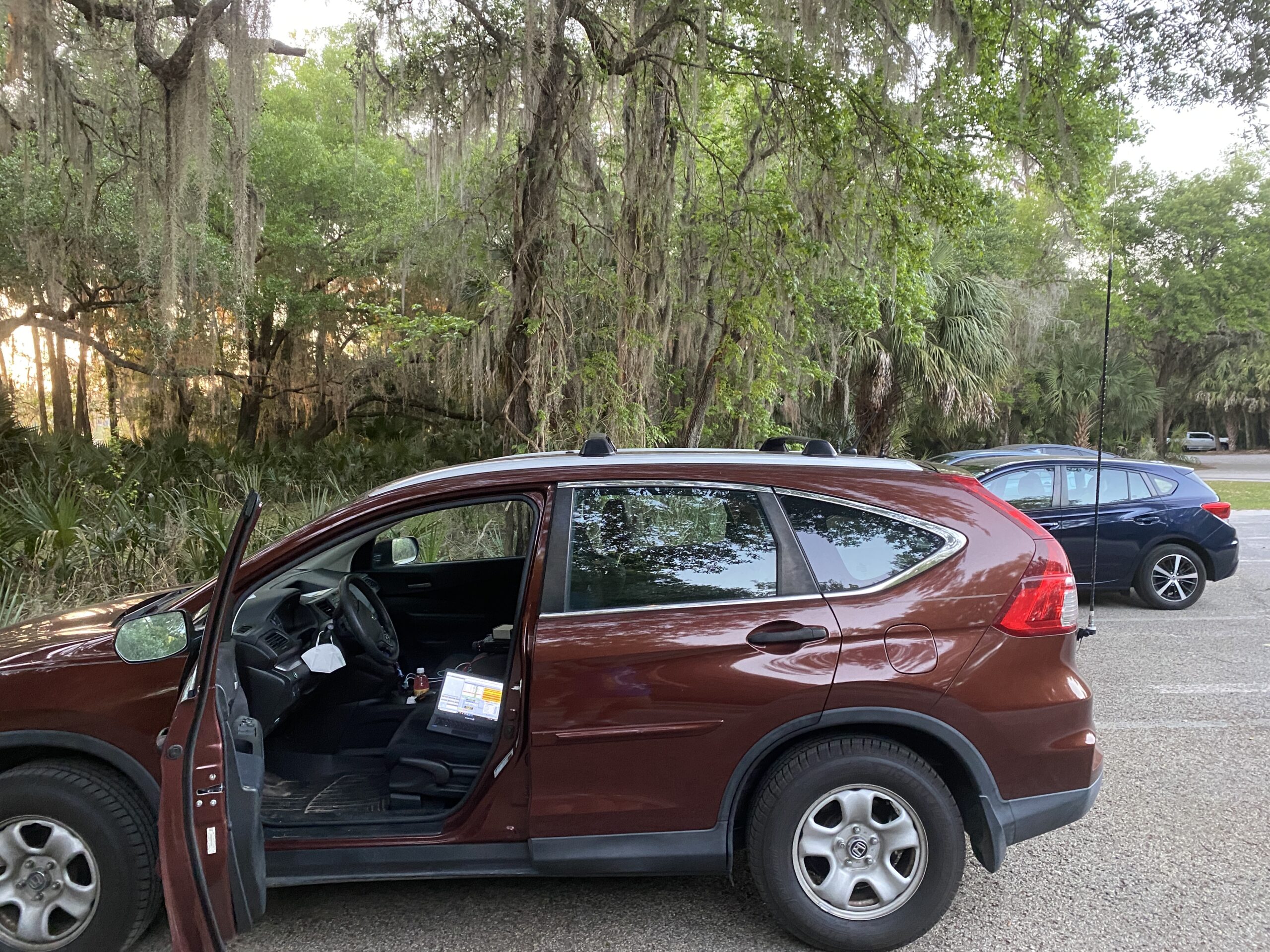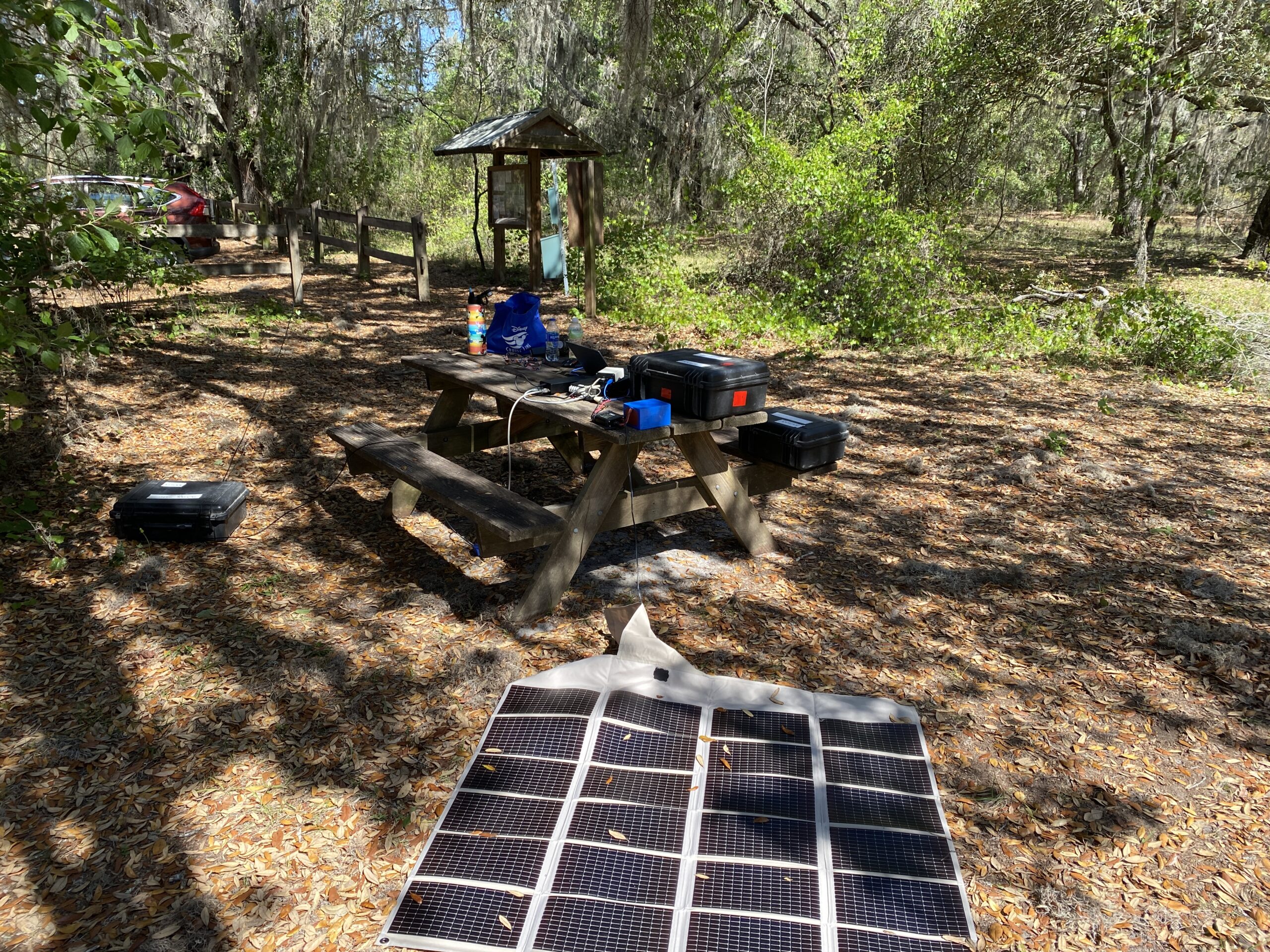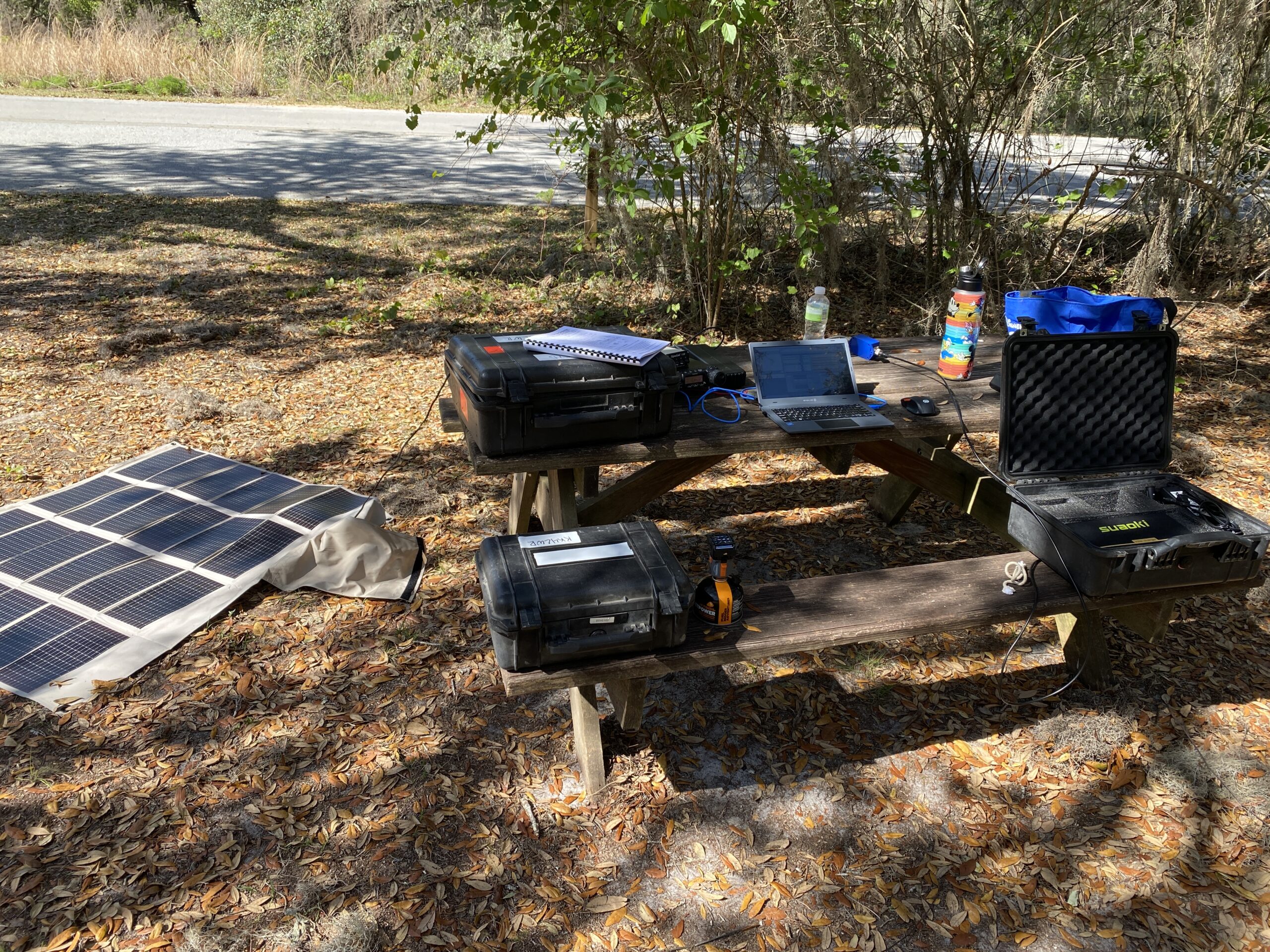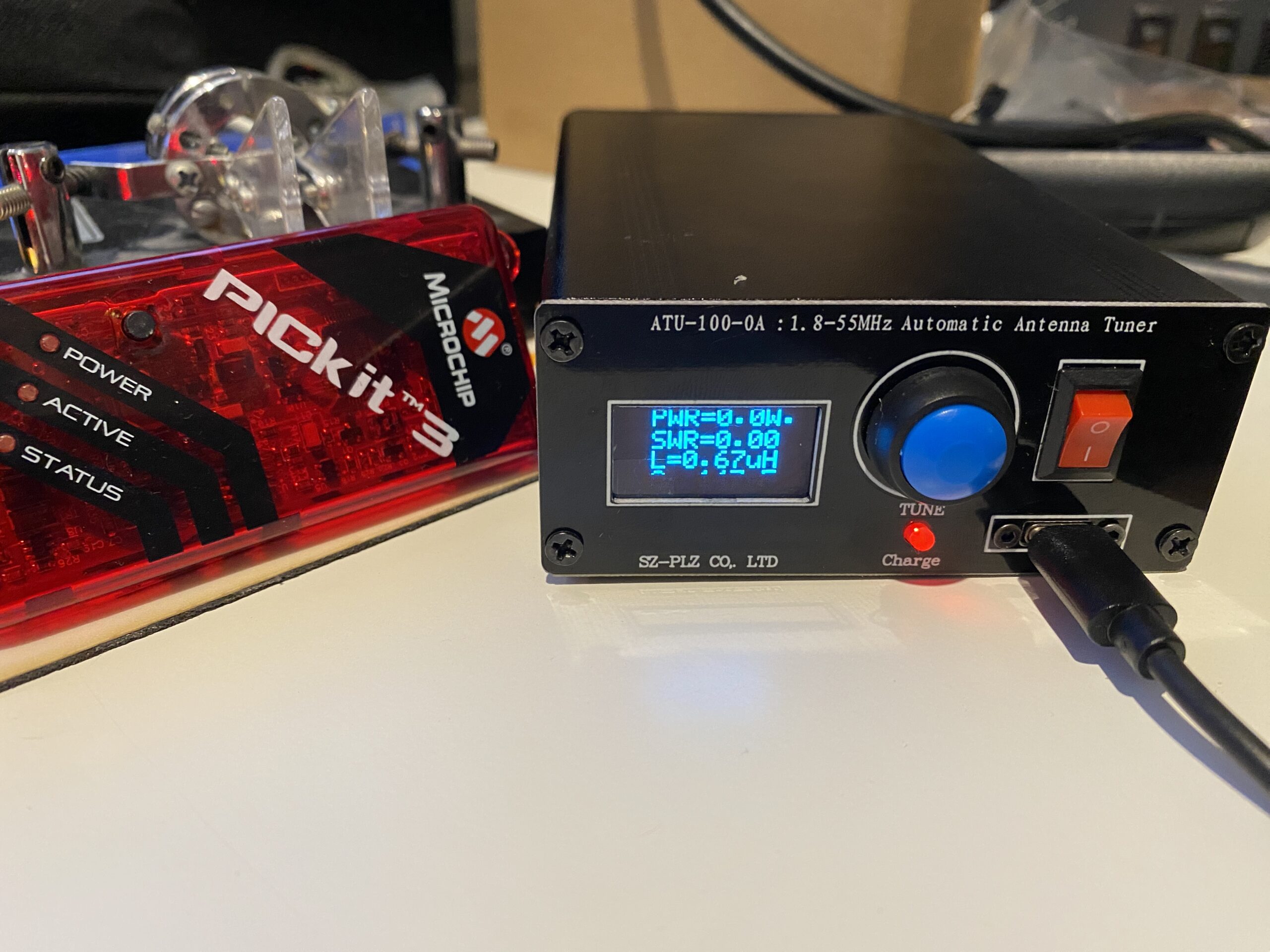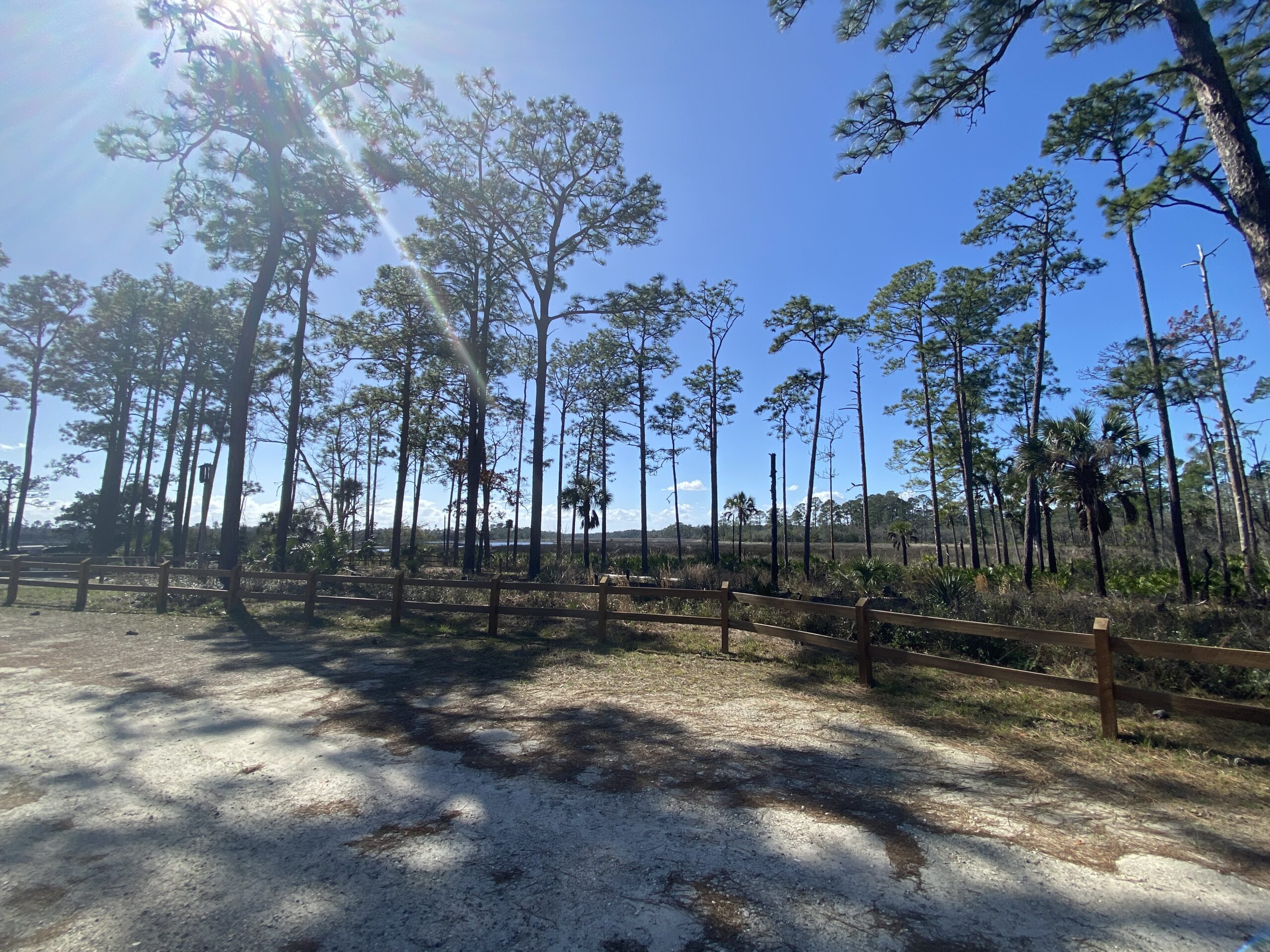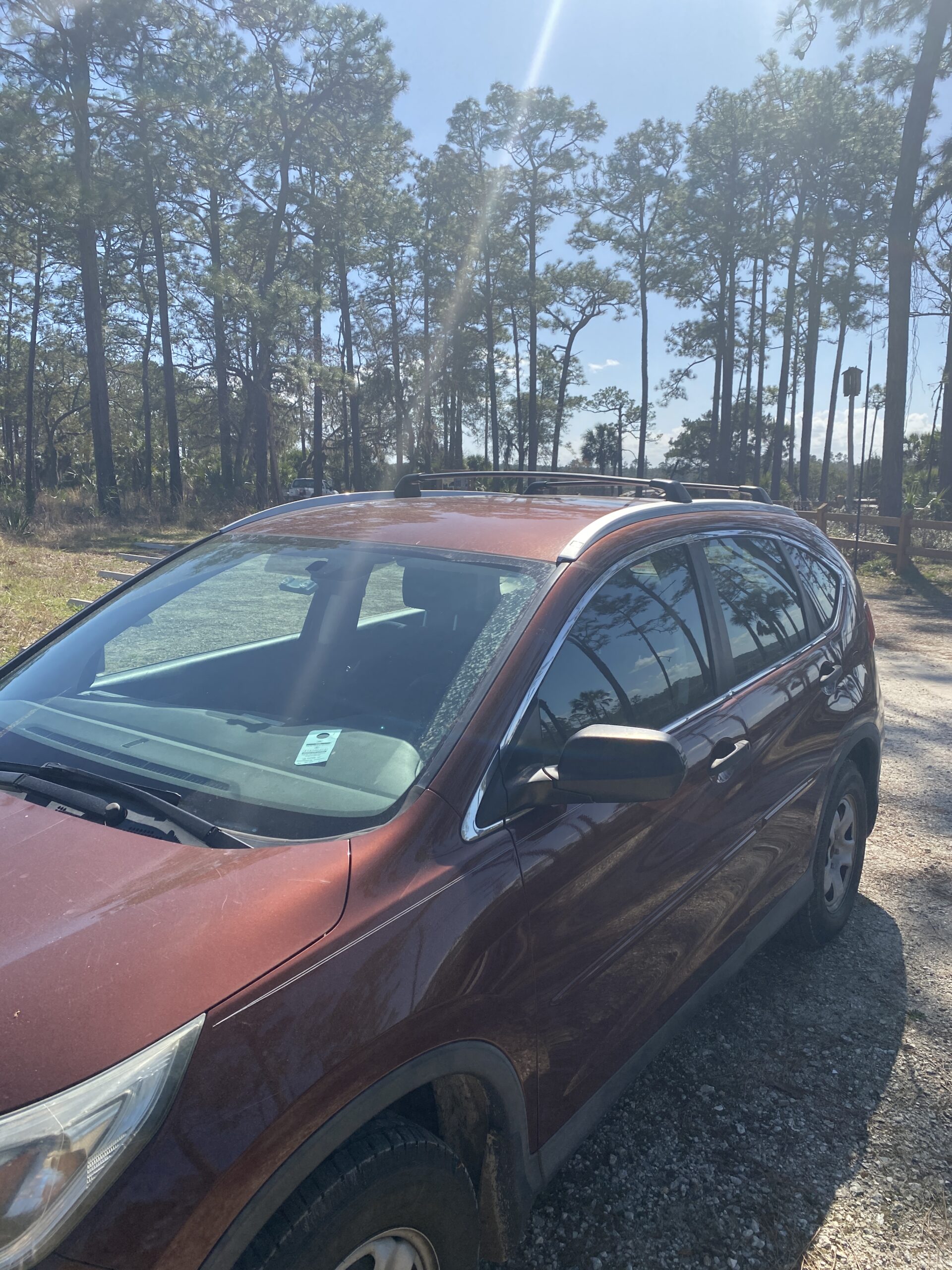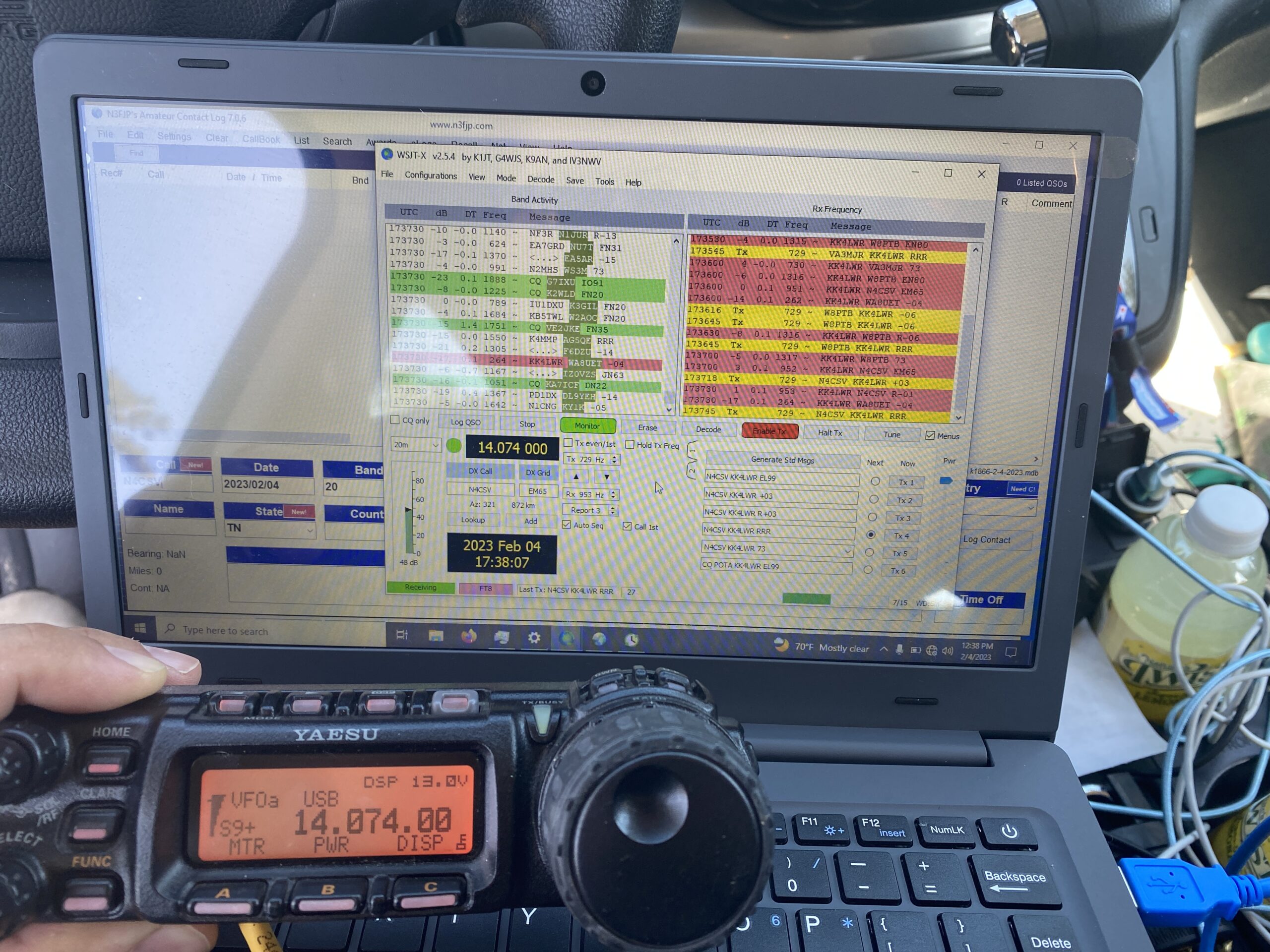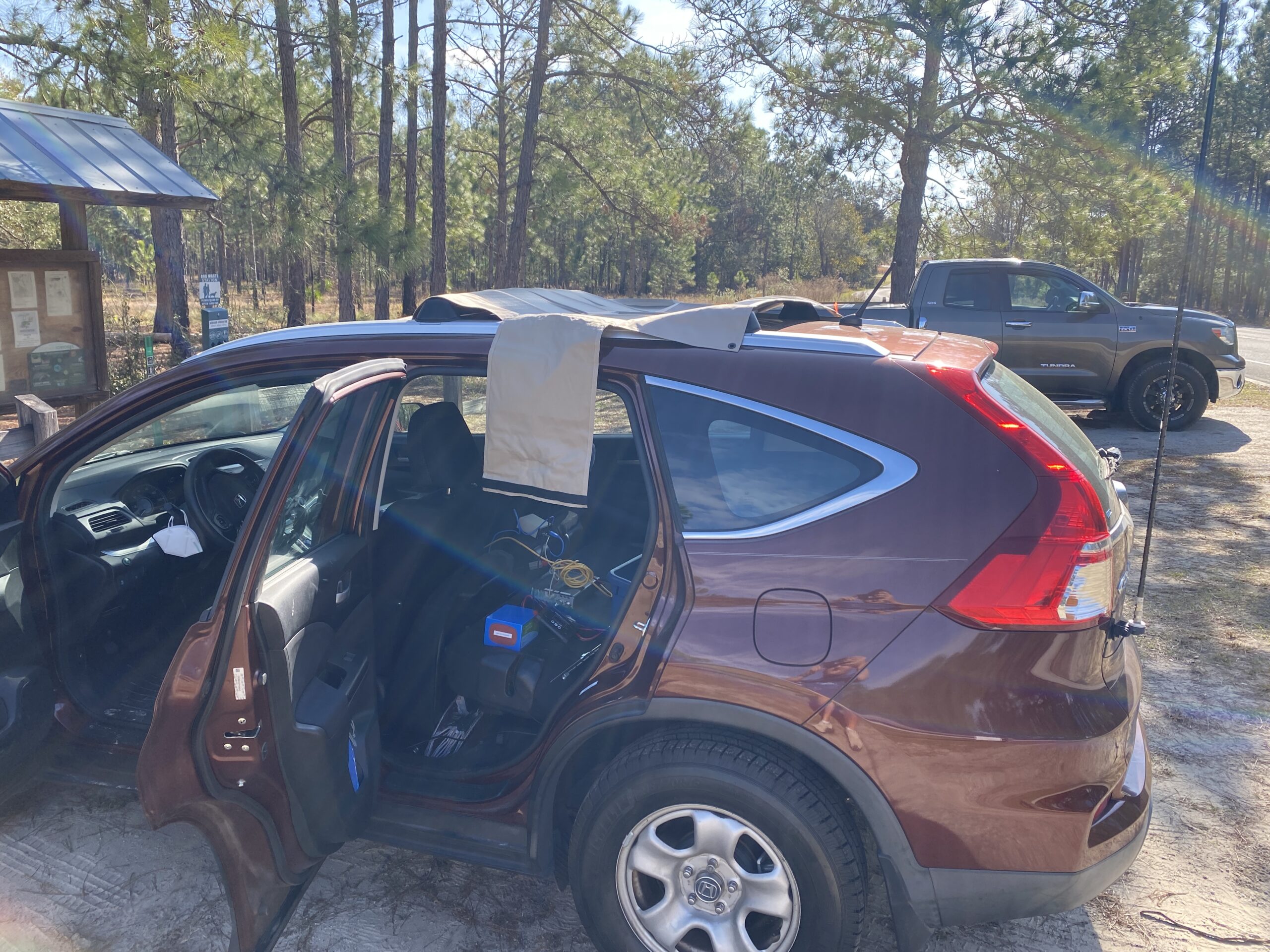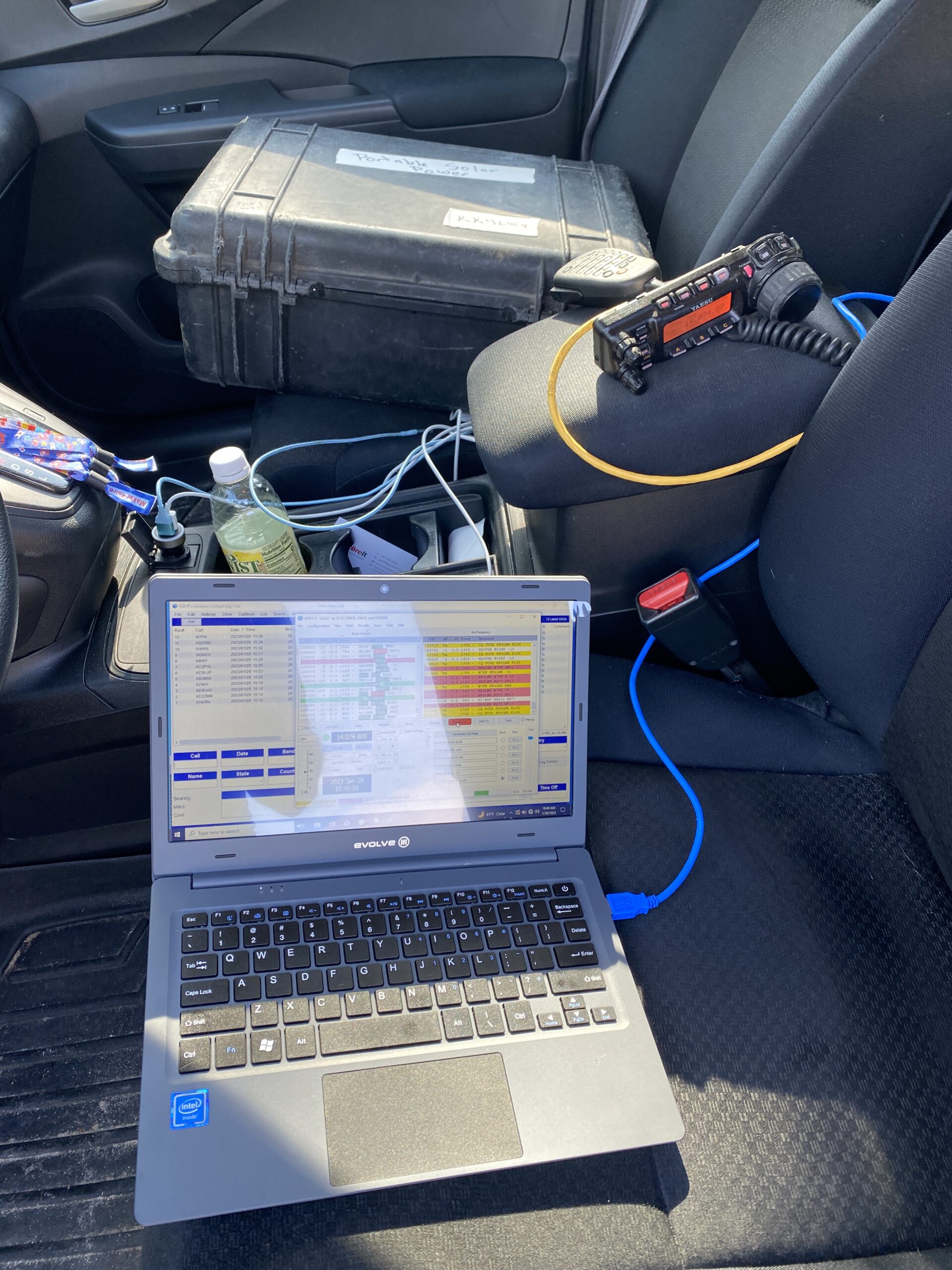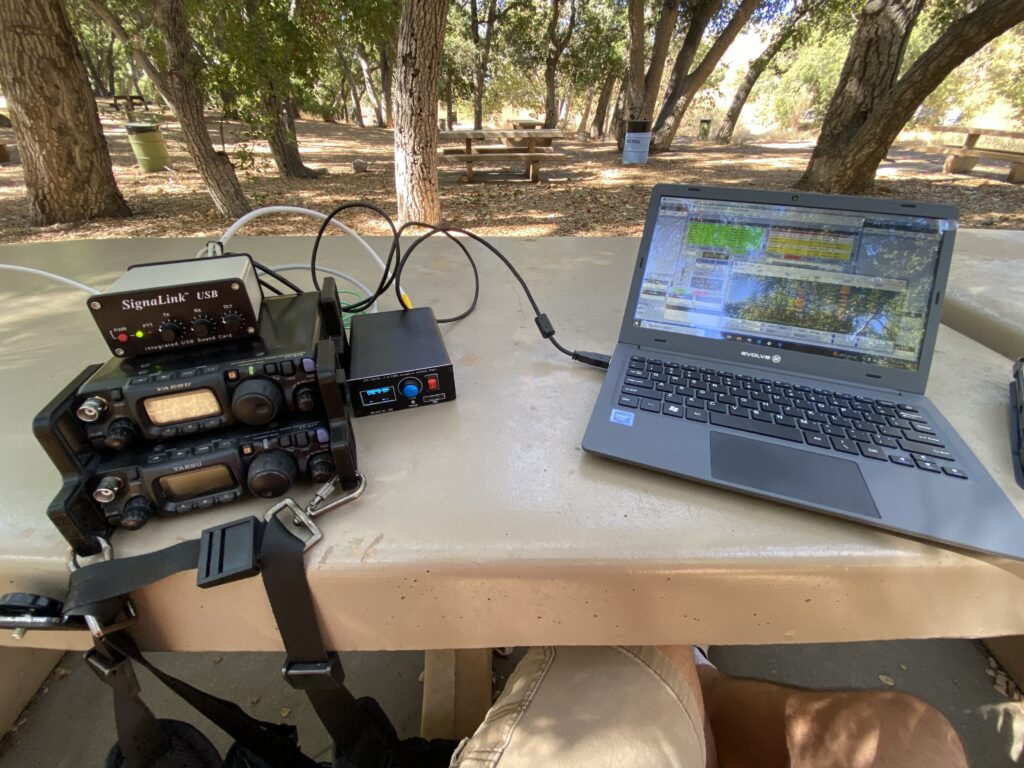
I’m very lucky in that my wife (who is not a ham) is pretty cool with POTA. On the way back from a day in Tampa for a Dachshund race (or pups had a blast!) we decided to make a minor detour to Hillsborough River State Park.
At this point, I have my POTA setup down to a science and I can load the car in under a minute with the 3 cases I need. I can also setup in under 10 minutes. Hillsborough River State Park is a nice little park with lots of picnic areas. I was able to find a table among some trees and setup.
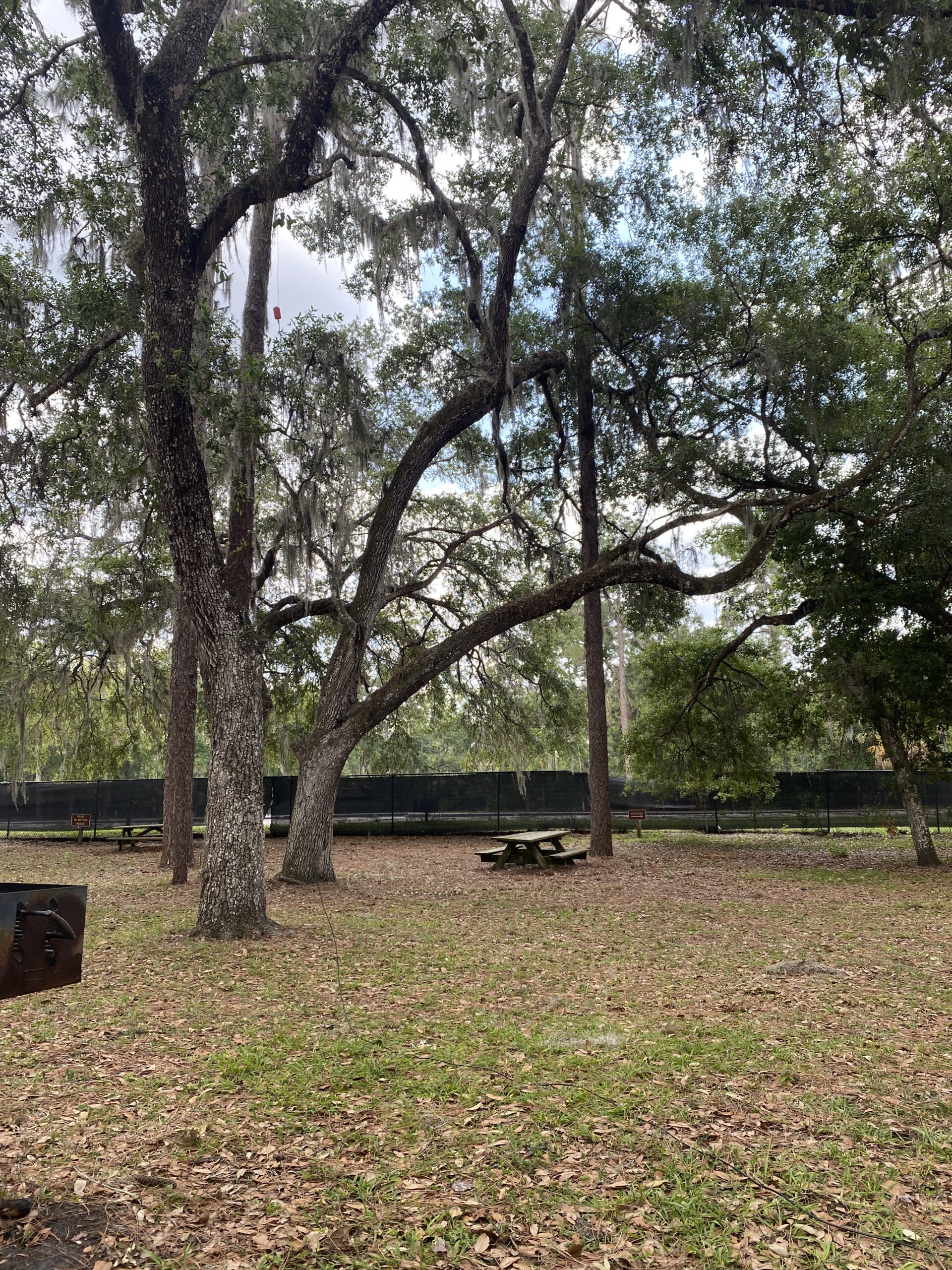
This setup had some nice high trees that worked great for the end fed antenna. After using some arborist line and a weight to get it up in a tree. I use a 9:1 balun and a little over 60 feet of wire for the antenna and it tunes up well.
Band conditions for this activation were not great. After trying to call CQ for a bit to no reply, I was forced to switch to FT8. I was able to secure 13 contacts between 15 and 20 meters over the course of about an hour. After that, Kirsti and the dogs wanted to head home.
I really liked Hillsborough River State Park. It is a nice area with lots of shade. It seems popular with locals as there were several picnics that started after I got their. There is access to the river to kayaking and canoeing. Overall it was a great experience!
